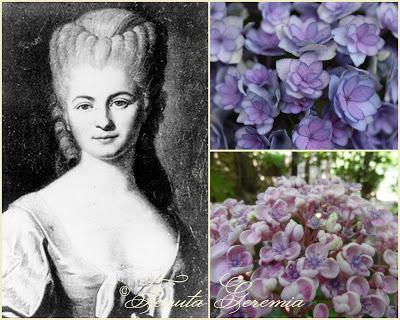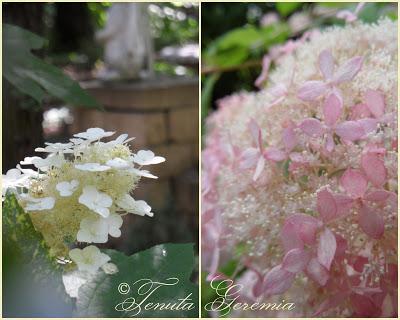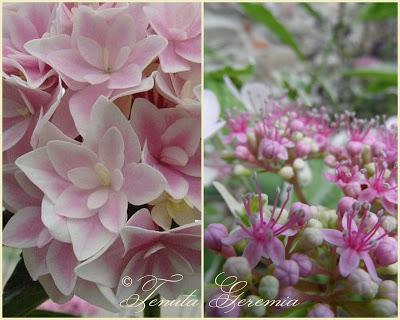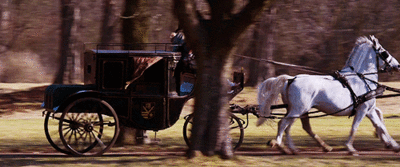
Come sovente accade Nicole-Reine non solo era la moglie del migliore amico di Commerson ma la donna di cui egli sarà follemente e segretamente innamorato per tutta la vita, per cui anche questo fiore incantevole, come molti altri, deve il proprio nome ad una vera storia d'amore.
Vi chiederete a questo punto quale sia l'attinenza di quanto vi sto raccontando con il nome Hortense, ma andiamo con ordine senza dimenticare alcun dettaglio.
Nel corso di una breve ma intensa vita, Commerson accompagnò Louis Antoine de Bougainville, in qualità di naturalista, nel viaggio intorno al mondo che gli venne ufficialmente commissionato da Re Luigi XV con l'ordine di restituire le Isole Malvine agli spagnoli passando, però, dallo Stretto di Magellano in modo da 'circumnavigare' la terra, raccogliendo così migliaia di specie di piante nuove, insetti, pesci e uccelli ancora sconosciuti che furono offerti al Giardino del Re; il viaggio fu avventuroso, durò due anni e toccò tra le altre terre l'America del Sud ( in Brasile trovarono la pianta che da Bouganville mutua il proprio nome ), la Terra del Fuoco e la Patagonia per poi raggiungere Tahiti, l'Australia, La Nuova Guinea, il Madagascar e l'Oriente dove trovarono quella che viene comunemente detta Ortensia, originaria dell'Asia meridionale ed orientale (Cina, Giappone, Corea, Himalaya, ed Indonesia furono le regioni dove ne rinvennero la maggior quantità di specie) e delle Americhe.
Per lo più in natura quelli di Ortensia sono arbusti alti 1-3 metri, alcuni sono piccoli alberi, e altri liane che raggiungono i 30 m. arrampicandosi sugli alberi, possono essere sempreverdi o decidui nelle terre di origine, anche se le specie che si sono adattate alle zone temperate e che sono ampiamente coltivate da noi sono tutte decidue.
In primo luogo egli assegnò a questa nuova pianta il nome di Peautia coelestina in omaggio a Madame Lepaute con evidente riferimento al suo cognome e alla sua professione, l'astronomia, ma cambiò poi idea, forse nel timore di destare troppi sospetti, e le mutò il nome in Hortense, come Madame Lepaute era da lui chiamata nell'intimità.
Dite che sia in nome di questo nobile sentimento che i vittoriani, così devoti al romanticismo, riservassero un posto speciale ad almeno un cespuglio di Ortensia, classificata in seguito da Lamarck, nel 1789, con il nome scientifico di Hydrangea, nei propri giardini ?


In effetti, in nome di questa storia che ne cela l'introduzione in Europa, essa è da allora annoverata tra le piante che simboleggiano amore e romanticismo ed anche gratitudine, quella che Commerson tributava alla sua Nicole Reine per avergli fatto conoscere un sì nobile sentimento.
Sappiamo che per vittoriani il giardino non era semplicemente uno spazio verde, un angolo di paesaggio, ma era vissuto come un prolungamento delle loro case e da qui comprendiamo l'esigenza di creare bow-windows in cui collocare piante più delicate, ancora in casa, ma già in giardino; durante il secolo scorso il giardino era il posto più fresco in cui trovare sollievo dal caldo dell'estate, e ciò lo rendeva il luogo ideale per intrattenere conoscenti, prendere il tè e per rilassarsi.
Ma torniamo all'Ortensia che, come già detto, era una pianta caratteristica e comune nei giardini vittoriani e non solo, pensate che molti londinesi le ponevano persino sui loro davanzali per dare vita ad un piccolo spazio verde che contrastasse il dilagare del fumo che promanavano le prime industrie tessili della periferia alimentate a carbone.
Qui ormai le nostre Ortensie sono tutte nel colmo della loro festosa fioritura segnando il pieno dell'estate e facendo presagire il periodo più caldo dell'anno, aspergendo il mattino presto e la sera all'imbrunire le note delicatamente cipriate emanate dai loro più piccoli capolini.
Vi auguro che il prosieguo di questa calda estate sia lieto per ciascuno di voi, miei affezionati lettori ed amici, e mi congedo come sempre salutandovi con un tutto il mio affetto, e dandovi appuntamento
a presto ♥



Hortense is a name that sounds very romantic, ancient, highly placed, perhaps heard in a movie that I don't remember or read long ago among the pages of a book telling a love story ... - I remind, for example, of Hortense Hulot in "La cousine Bette" by Honore de Balzac - and that was precisely the feeling that bounded for life Philibert Commerson, a French explorer and naturalist whose name is linked to that of Bougainville, to Hortense, pardon, Nicole-Reine Lepaute, famous astronomer, wife of Jean-André Lepaute known watchmaker of the Court who built with his wife a watch equipped with astronomical functions that could help her in her work, who had in Commerson a great and sincere friend.
- picture 1 - Nicole Reine Lepaute, Hydrangea YOU & ME, Hydrangea AYESHA
As often happens Nicole-Reine wasn't only Commerson's best friend's wife but the woman he was secretly madly in love with throughout his life, so also this beautiful flower, like many others, owes its name to a real love story.
Probably you're wondering, at this point, what is the relevance of what I'm telling you with the name Hortense, but let's go on with order without forgetting any detail.
During his short but intense life, Commerson accompanied Louis Antoine de Bougainville, as naturalist, in his travel around the world that was officially commissioned by King Louis XV with the order to return the Falkland Islands to the Spanish passing, from the Strait of Magellan to 'circumnavigate' the hearth, to collecting thousands of new species of plants, insects, fish, birds still unknown that were offered to the King's Garden; the trip was adventurous, lasted two years and touched, among other lands, South America (in Brazil they found the plant which takes its name from Bouganville), Tierra del Fuego and Patagonia and reached Tahiti, Australia, New Guinea, Madagascar and the Asia where they found what is commonly known as Hydrangea, native to South and East of this continent (China, Japan, Korea, the Himalayas, and Indonesia were the regions where they found the greatest amount of species) and to the Americas.
Most of the Hydrangea are in nature shrubs tall 1-3 meters, some are small trees, and others are lianas reaching 30 m. climbing trees, they can be evergreen or deciduous in their lands of origin, although the species that have adapted to temperate zones and which are widely cultivated by us are all deciduous.
First he gave to this new plant the name Peautia coelestina in homage to Madame Lepaute with obvious reference to her last name and her profession, astronomy, but then changed his mind, perhaps for fear of arousing too much suspicion, and changed its name in Hortense, as Madame Lepaute was called by him in the intimacy.
Do you think that it's in the name of this noble sentiment that the Victorians, so devoted to romance, reserved a special place, at least to one bush of Hortense, classified later by Lamarck, in 1789, with the scientific name of Hydrangea, in their gardens?
- picture 2 - Hydrangea Paniculata Quercifolia ed Hydrangea Annabelle Invincibelle
- picture 3 - Hydrangea Macrophilla Freedom ed Hydrangea Mariesii Variegated Lacecaps
In fact, in the name of this story that conceals the introduction in Europe, since then it is considered one of the plants that symbolizes love and romance and even gratitude, what Commerson granted his Nicole Reine for having made him know such a noble sentiment .
We know that the Victorian garden was not just a green space, a corner of the landscape, but it was seen as an extension of their homes and from here we understand the need to create bow windows in which to place more delicate plants, 'still in the house, but already in the garden'; during the last century the garden was the coolest place where to find relief from the heat of summer, and that made of it the ideal place to entertain acquaintances, take tea and relax.
But let's come back to Hortense that, as already mentioned, was a plant characteristic and common in Victorian gardens and not only, just think that lots of Londoners placed them even on their windowsills to give birth to a small green space to oppose to the spread of smoke which wafted from the first textile factories in the suburbs fueled by coal.
Here our Hydrangeas are all in full bloom in their festive party marking the height of summer and foreshadowing the hottest time of the year, sprinkling in the early morning and in the evening dusk gently powdery notes issued by their smaller heads .
In the hope that the rest of this hot summer is happy for each of you, my faithful readers and friends, i'm going to leave you as usual greeting you with all my affection, and giving you appointment
very soon ♥









